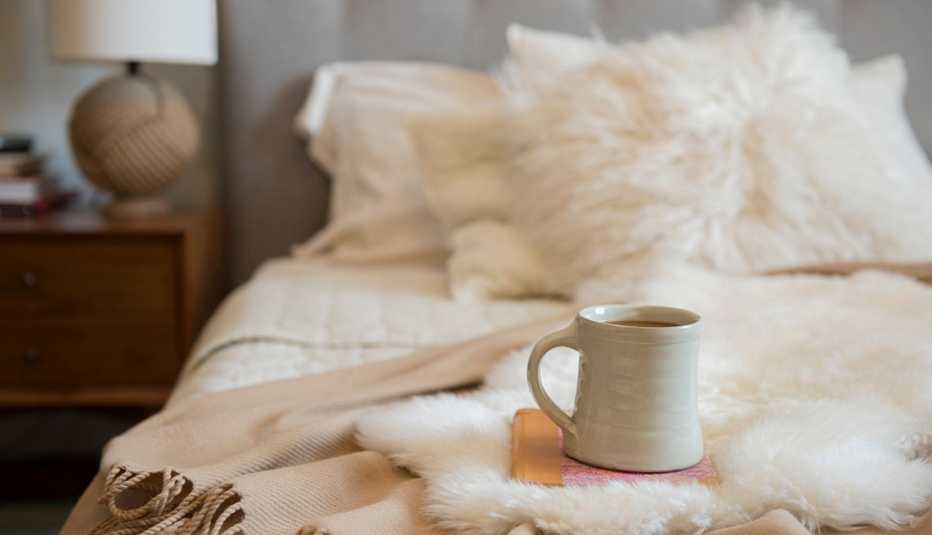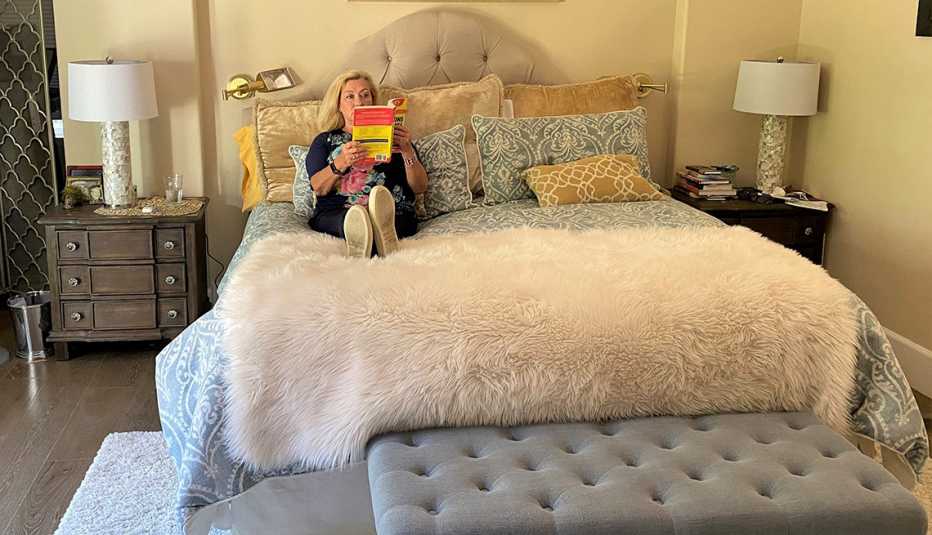Staying Fit


We're all spending more time at home during the coronavirus pandemic, but Tenny Garner has found herself increasingly lingering in bed. She drinks her morning coffee in bed and takes a daily nap there.
"If I'm anxious in this COVID time, I make the bed, lean back and read a book,” says the 72-year-old resident of Troutdale, Oregon. Since she's spending so much time there, this spring she made some changes to her bed to make it “like a cocoon,” she says.


AARP Membership— $12 for your first year when you sign up for Automatic Renewal
Get instant access to members-only products and hundreds of discounts, a free second membership, and a subscription to AARP the Magazine.
She's not the only one. The average American spends 36 years in bed over their lifetime, according to a survey by bed company Slumber Cloud.
Since the bed is the focal point of any bedroom, it should be an inviting, peaceful oasis from the stress of everyday life. And with cooler autumn months just around the corner, you may want to make your bed warmer and cozier.
It's not just cosmetic. The Centers for Disease Control and Prevention (CDC) recommends adults sleep at least seven hours daily (even more for people over age 60), and a relaxing bed may improve your sleep and health. “The bed is the new nest,” says Kathleen Hallin, an interior designer in the San Francisco Bay Area. “If you're home and you have kids or grandkids and you're trying to work, the most private place often is the bedroom."
Here are some simple ideas to refresh your bed.
1. Start with the base layer
Improve your sleep quality with a new mattress, especially if yours is lumpy, squeaks or you wake up sore. Today, there are many options — from a traditional mattress to memory foam. New charcoal-infused foam or a charcoal-infused mattress topper help regulate heat. Use a mattress cover for protection. For added luxury in autumn and winter, consider a feather-and-down topper or a wool mattress cover.
Garner calls the Tempur-Pedic mattress with adjustable feet and back for reading she bought this spring “amazing.” She says: “I don't wake up with a headache or joints hurting."
2. Invest in bedding
Natural materials, such as 100 percent cotton or bamboo, typically are smoother and more comfortable. Higher-thread-count sheets make a difference, experts say, but their tight weave makes them better for cooler temperatures. Flannel sheets can add warmth for fall and winter.
Amping up the coziness of your bed is all about layering, which adds plushness and warmth. Add a cotton coverlet over sheets in warmer months and wool blanket or a down comforter in cooler months.
In June, after months in COVID-19 lockdown, Patti Cohn of Ross, California, refreshed her king-size bed with fancier sheets and more pillows. She also replaced her cotton comforter with down and a wooden headboard with tufted fabric.
Cohn, 64, estimates she spent a few hundred dollars to remake her bed, keeping costs down by buying several items through e-tailers like Overstock and Wayfair. “It was inexpensive to redo the look,” she says, and “it makes a huge impact."


































































More on Home and Family
Free Resources to Aid Veterans, Military, Their Families Amid COVID-19 Outbreak
Check out where you can find support for your health and finances